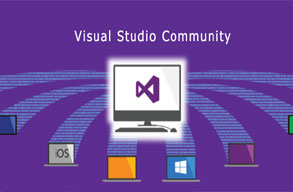

CODA VS BBEDIT SOFTWARE
Some famous writers have even written first drafts of books in TextEdit, so don’t overlook it as a writer’s tool.įor developers or anyone who wants a bit more power in their text editor, TextWrangler from Bare Bones Software is one of the best known free editors. The standard OS X spell checker will let you know when you’re misspelling words, but for the most part you’re getting a very simple and easy to use way to capture text. TextEdit, being free and almost universally compatible, is a wonderful way to simply type a lot of text.
CODA VS BBEDIT LICENSE
Chances are if you download an app installer from a website, it will include a “ReadMe.txt” file with instructions or license information. txt format, as they’re universally readable - every device has some way to view and in many cases edit. Many documents that you can download from the Web are in. Those documents have no formatting, there’s no ruler, no fancy formatting. When it’s used strictly to just write text, TextEdit can save documents in.

TextEdit, editing a Rich Text Format (RTF) file. When it’s used in that way, TextEdit saves files as RTF (Rich Text Format). There’s the common “ruler” at the top of the TextEdit window, and tabs can be added for aligning text. Oddly enough, it can be used as a kind of “mini word processor” as it includes the ability to use different typefaces, sizes and styles, can justify text (align it with margins), even create numbered or bulleted outlines. Probably the most unsung app included with OS X is TextEdit. Don’t need the different header styles, footnotes, and tables of contents? Then a text editor might be the better choice. If you’re looking for something that can create beautifully formatted text or include images and tables, then a word processor like Pages or Microsoft Word is going to do the job for you. The best way to delineate the difference between a text editor and a word processor is the level of formatting that the program can apply to text.
CODA VS BBEDIT CODE
For programmers and web developers, text editors evolved with the ability to highlight certain types of code in different colors to ensure that everything was properly formatted - in other words, that brackets were closed, that a certain code had a corresponding “close” code, etc. Of course, this meant that the programs became more difficult to use, and I personally recall some word processing applications from the late 1980s that were incredibly complex with a long learning curve.īut for many people, text editors were and are the easiest way to just quickly type out text and get it into a computer readable format. By applying formatting codes to text, it was possible to do all of those things that you couldn’t do with a plaintext editor. When the first word processing programs came out, they started making things fancier. There was no way to center text, bold-face headlines, justify text to your margins - it was just text on a screen, printed on a dot-matrix printer. Originally, if you wanted to write a letter or book on a computer, you used a plaintext editor to type in your document and then print it out. Text editors have been around since the first days of the personal computer revolution. Today’s Friday Five looks at five popular OS X text editors, what they’re best used for, and why you may want to consider using them instead of traditional word processing applications like Pages or Word. Primarily used to generate plain text files with no styling or formatting, they can be used for a huge number of purposes from taking quick notes to editing websites or writing application code. Text editors are the unsung heroes of the Mac.
CODA VS BBEDIT MAC OS X
Each week, the Friday Five takes a quick look at a Mac OS X or iOS app to point out five things you may have overlooked before. It’s the end of the week, but that doesn’t mean an end to learning more about your favorite Apple devices.


 0 kommentar(er)
0 kommentar(er)
